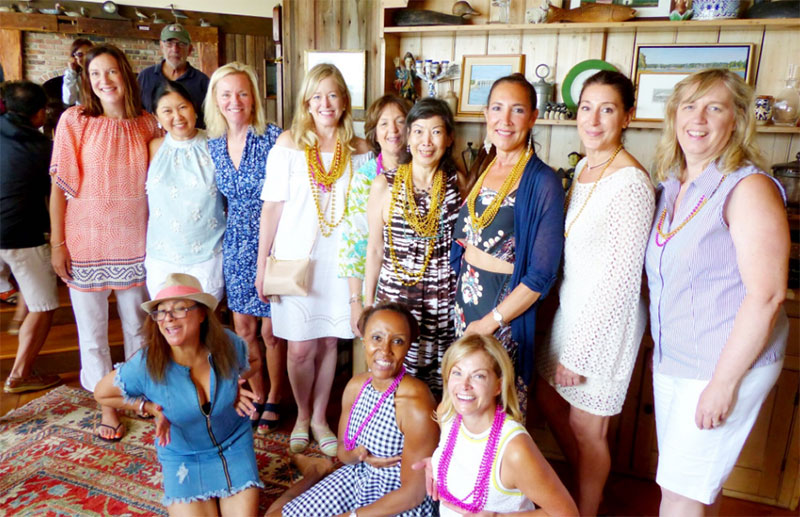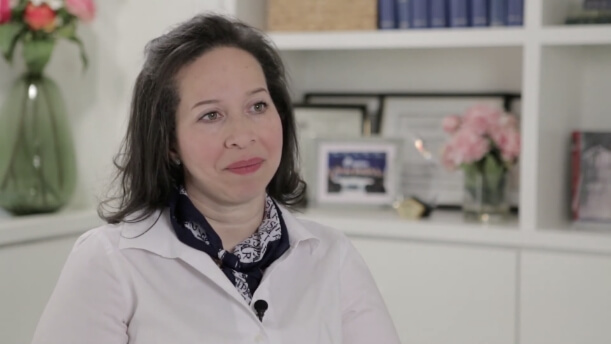
Prophylactic Mastectomy: Options for Breast Reconstruction
All women are at risk for breast cancer, particularly with advancing age. There are specific factors, however, that significantly increase the risk for women of all ages. As more women become aware of these factors, those at high risk can explore their options for reducing their risk. The most common risk factor is an inherited genetic mutation that greatly increases the odds of developing breast cancer. For some women, inherited genetic mutations can increase lifetime risks of developing breast cancer to greater than 86%. For women who have seen multiple family members die after struggling with breast cancer, the most common risk-reducing option is bilateral prophylactic mastectomy – the preventive removal of both breasts.
The decision to undergo prophylactic mastectomy is a difficult one and may not be right for all high-risk women. Those who are faced with this decision must weigh various medical and personal factors, one of which is the options available to them for breast reconstruction. We now have the ability to offer women a range of reconstruction solutions that enable each woman to choose the one that is right for her.
Assessing risk
National Cancer Institute statistics indicate that about 12% of women in the general population will develop breast cancer at some point in their lives. One of the most important factors that increases a woman’s risk is an inherited mutation in the BRCA1 or BRCA2 gene that prevents the gene from performing its proper function, which is to produce proteins that help suppress tumors. Women with a BRCA1 or BRCA2 mutation have a much higher lifetime risk for breast cancer, and much of the risk occurs at a younger age.
Experts do not agree on the exact statistics for women with genetic mutations because different studies of families with BRCA and other mutations have identified different lifetime risks. Other gene mutations that increase breast cancer risk for women include PALB2, CHEK2, ATM, PTEN, TP53, CDH1, and STK11. There are also women with a very strong family history of breast cancer who may have yet unidentified non-BRCA genetic mutations that can seek genetic counseling to help determine their breast cancer risk. Factors that increase risk include a strong family history of breast cancer, particularly in a mother, daughter, or sister diagnosed before age 50; Ashkenazi Jewish heritage, previous radiation to the breast, and a personal history of certain abnormalities in the breast tissue that are markers of increased risk such as atypical ductal hyperplasia or lobular carcinoma-in-situ.
According to the National Cancer Institute, women who undergo prophylactic mastectomy can reduce their risk of developing breast cancer by 95% and those with a strong family history can reduce risk by 90%. The risk reduction statistics for prophylactic mastectomy are compelling. But each woman is an individual and there are many factors that will influence her decision. Along with consultation with her doctor, she should meet with a plastic surgeon who can provide detailed explanations of the reconstruction options available to her and the results she can expect from each.
Reconstruction
Breast reconstruction following prophylactic mastectomy can be done during or shortly after the mastectomy or it can be done months or even years later. A new breast can be formed with artificial implants or with the woman’s own tissue, in a procedure known as autologous reconstruction.
The primary advantage of implants is that the reconstructive surgery is easier and faster. Implants are not a permanent solution, however, as they are foreign bodies that can cause various cosmetic and medical problems. Although implants in the United States have a ten-year warranty, many have to be removed or replaced well before that. For women who opt for implants, we will often place implants above the pectoral muscle using cohesive gel implants, which are a new type of implant that is softer than a saline implant and hold their shape better than a traditional silicone gel implant.
Autologous reconstruction provides the longest-lasting results and the highest levels of patient satisfaction. Since they are made of the patient’s own tissue, the restored breasts are soft, warm, and look and feel more natural than implants. The most advanced type of reconstruction, called “perforator flap” breast reconstruction, uses microsurgical techniques to preserve the underlying muscle at the donor site while carefully transfer fat and skin along with a blood supply to create a new breast. Perforator flap surgery most often uses tissue from the abdomen but the thigh also serves as a donor site, usually when the abdomen is not serviceable.
We’ve made remarkable strides in reconstructive surgery. In addition to creating a natural looking breast, we can reconnect nerves to restore feeling to the breast. We can also conserve the nipple and areola during mastectomy to produce a breast that is almost indistinguishable from the pre-mastectomy breast. I have had to write letters to women’s primary care doctors and gynecologists to certify that their reconstructed breasts are not the original, and thus they do not need mammograms. As difficult as it is for a woman to learn that she is at high risk of developing breast cancer, it is comforting to know that she has options that can preserve both her health and her sense of self.


